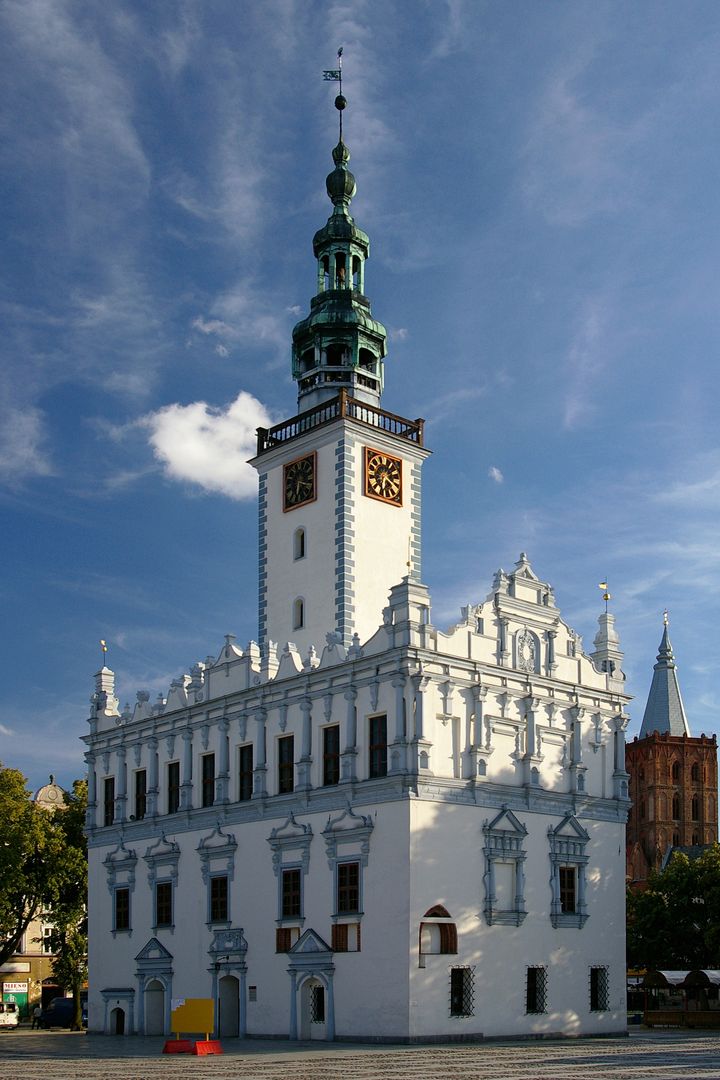Chełmno Town Hall
6.86

Overview
The Chełmno Town Hall is one of the most valuable monuments of Polish Renaissance, erected at the end of the 13th century as a Gothic building. In its initial construction phase, it housed the city weighhouse and a councilors' meeting hall. Between 1567 and 1572, the town hall was thoroughly rebuilt, leading to the addition of a prison, a courtroom, and shops. The tower, constructed between 1584 and 1596, received a Baroque spire in 1721. The last major expansion took place from 1884 to 1887 according to a design by T.W. Hermann, which added a second floor to the building. After World War II, the town hall underwent restoration, and in 1983 it became the seat of the Chełmno Land Museum, which organizes exhibitions, concerts, and national celebrations.
Architecturally, the town hall stands out with its tall, three-story rectangular structure, featuring distinctive decorative elements such as portals flanked by columns, rusticated banding, and an richly decorated attic. The central part of the roof is adorned with a quadrangular tower topped with a Baroque spire. On the western wall, visitors can find the former standard measure of the Teutonic State, known as the Chełmno rod, measuring 432.5 cm in length.
A site of historical deliberations and gatherings, the town hall is also an important cultural hub in Chełmno, attracting tourists and locals alike who come to admire its history and architecture. Listed in the register of monuments in 1929, it reflects the rich history of the region, showcasing its Renaissance and Gothic heritage.
Location
2025 Wizytor | All Rights Reserved